Jeff Nichols had dreamed of making a film about motorcycle clubs in the 1960s for more than 20 years.
The obsession began in his brother’s apartment, when he first opened Danny Lyon’s book “The Bikeriders,” a new journalism-style account of the Chicago Outlaws Motorcycle Club in the mid-1960s. He could picture the movie in his head: a story of rebels, romantics, frauds and the end of an era.
But he didn’t really realize how terrifying it would be to film the motorcycles in motion.
The bikes were vintage. The actors, including Austin Butler and Tom Hardy, would drive at high speed. And there would be no helmets. At one point, one of his stunt coordinators said, “There’s no way to make this 100 percent safe.” »
They went there. The danger was kind of the important point. And everyone escaped unscathed.
Their motorcycle expert (and amateur philosopher) said something that stuck with Butler. It’s dangerous, but it can also be empowering.
“Your life is in your hands,” Butler said. “But it’s also an incredible act of self-love.” You have to take care of yourself. No one else can do it for you.
“The Bikers” ( racing into cinemas nationwide Friday ) is a rare gem of the summer: an original film with stars (including Jodie Comer, Michael Shannon, Norman Reedus and Mike Faist), cool credibility, pathos, and lucid nostalgia for a moment, and a type of guy who was disappearing even as it was happening.
“There’s all this romanticism around this subculture. It’s easy to become ‘Grease’ very quickly,” Nichols said. “It’s a film that’s really about nostalgia. There’s a sadness that comes with that. But there is also a joy in remembering it.
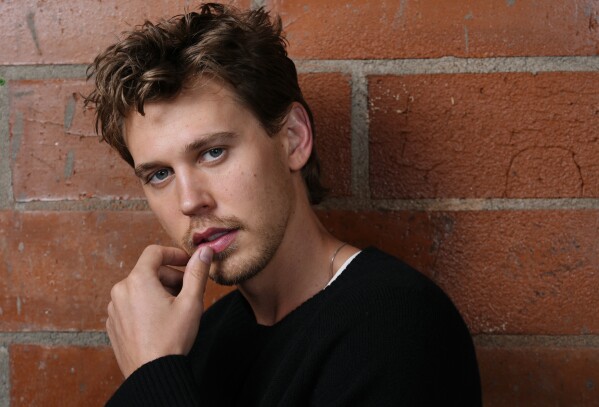
Butler (AP Photo/Chris Pizzello)
Catching a Rising Star
Nichols has always been lucky when it comes to casting, managing to attract movie stars to his films when they are on the cusp of making it big. Before making “Take Shelter,” he remembered a producer asking him “who was this Jessica Chastain.” For “The Bikeriders,” it was Butler. ” Elvis “hadn’t come out yet. He didn’t know yet” Dune: part two.” But when he met him, he was sure of it. “This guy is a movie star, you know?” » said Nichols.
“I read a lot of scripts and this one felt different,” Butler said. “It was full of humanity and these cinematic moments that I could see in my mind. …I felt like I was invited into this other world. And he was one of the coolest characters I’ve ever read.
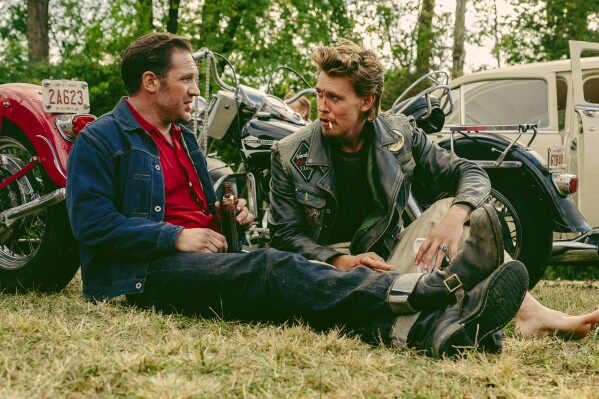
Tom Hardy, left, and Austin Butler in a scene from “The Bikeriders.” (Focus features via AP)
Butler’s Benny is also the most enigmatic of the group: a guy whose face is never shown in Lyon’s book and who is never interviewed – just talked about.
“I love how Jeff talks about himself as an empty cup that everyone wants to fill with their own expectations and responsibilities. He doesn’t want any of that,” Butler said. “That’s when he wants to break free and be free.”
And Butler brought an element to Benny that Nichols hadn’t originally envisioned. Nichols wanted Benny bottled up until the end and remembers telling his star to “pull him out” on several occasions.
“Like, stop smiling,” Nichols laughed. “When this child smiles, the whole world smiles.”
But he quickly realized that there was no point in casting someone like Butler – an emotional actor with a big heart who would go and apologize to Hardy after a fight scene.
“At some point you have to find a balance between the character that’s on the page and the human being that’s playing that role,” Nichols said. “And this character got better because of him.”
A different point of view
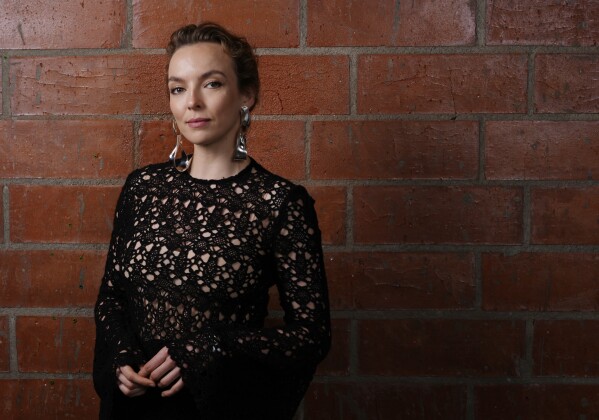
Jodie Comer (AP Photo/Chris Pizzello)
In his many years of thinking about how to make “The Bikeriders” work, one of Nichols’ biggest breakthroughs was when he realized who the narrator should be: Kathy.
Based on a real woman, she falls in love with Benny at first sight and finds herself enveloped in the club.
“If you ask Danny, Kathy was one of the most interesting people. She just jumps off the page,” Nichols said. “She’s witty, she’s introspective, she’s self-deprecating, she’s infuriating at times. She’s a real person. And honestly, I kind of fell in love with her.
Comer saw in her a fascinating character, an “ordinary” but nevertheless extraordinary person: strong-willed, funny and authentic. She worked tirelessly to master Kathy’s very specific Chicago accent, using hours of recorded interviews with Lyon as a road map.
“I could see in her so many of the older women I had in my life,” said Comer, who grew up in Liverpool. “The way they tell stories and have a kind of magnetism.”
But on another level, she was simply a better storyteller, both as an outsider with inner intimacy and for what he wanted to say.
“The ultimate truth, and a subtext of the film, is that men are really bad at sharing their emotions,” he said. “Observing this group in the hands of a male narrator, I think, would be really boring.”
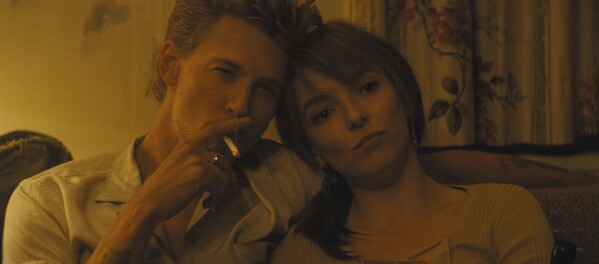
Butler and Jodie Comer in a scene from “The Bikeriders.” (Focus features via AP)
Fact, fiction and telling a good story
“The Bikeriders” is a work of fiction. Nichols didn’t want to be the historian of the Outlaws, a group that still exists. Above all, he wanted to capture this time and this culture and evoke the feeling he had when he opened this book so many years ago.
But it also relies heavily on images of Lyon, some of which are reconstructed, and on reporting. Much of Kathy’s dialogue is stuff that the real Kathy, who was married to Benny, said. Hardy’s character, Johnny, apparently also took inspiration from the Marlon Brando film “The Wild One” to create the club. He was the leader and also a bit of an imposter – a suburban dad with a real job on the side.
Nichols also chose to make the film in color, instead of imitating Lyon’s famous use of black and white photography.
“They’re beautiful, but they’re romanticized,” Nichols said. “I think when you color them, they become less affected. They become more realistic.
Bringing it to the big screen
Bikeriders’ journey to movie theaters hasn’t been smooth. Last fall, it made a triumphant debut at the Telluride Film Festival, often a launching pad for Oscar contenders. But as the December release date approached, it became clear that the actors’ strike was not going to end in time for the stars to help promote the film. Headlines indicated that The Walt Disney Co.’s Searchlight Pictures had dropped “The Bikeriders” instead of simply saving it for a post-strike release.
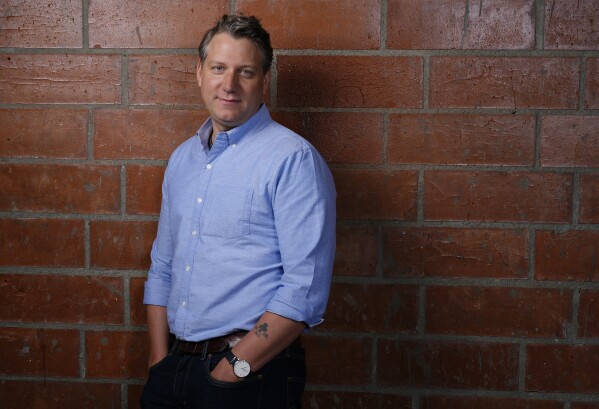
Jeff Nichols, writer/director of “The Bikeriders” (AP Photo/Chris Pizzello)
“It was poorly reported,” Nichols said. “It was frustrating. It felt like you all had a fundamental misunderstanding of how this movie was made.
The truth, Nichols explained, is a bit more complicated and nuanced because New Regency finances its own films and their distribution, often working with studio partners to do so. After the December release deadline, another opportunity arose with Focus Features, the arthouse arm of Universal Pictures, planning a splashy worldwide summer release.
The joys and pains of riding these bikes
Like Butler, Hardy came into the film with some motorcycle know-how. But neither would describe it as a boost: old bikes are a different beast.
“It turns out it’s a convenience because I can ride instead of lying on the ski,” Hardy said. “But it quickly became a disadvantage. You’re busy and you’re trying to do the other job, which is pulling the face where you’re trying to act, and the bike is unpredictable.
Still, once they figure it out, it could be pretty exciting.
“It was exhilarating to ride in a giant group,” Butler said. “You feel the energy of each motorcycle coming together.”
Comer said riding Benny’s bike for the first time was “a truly magical movie moment.”
“We were on a night shoot in Cincinnati and we were freezing with the wind in our hair,” she said. “You see the sparkle of the lights, the street lamps. You hear the roar of the engines. I was like, Oh my God, this is exactly what she talked about.
And of course, the danger was always present. But it also resulted in some real cinematic magic, like the near-impossible recreation of one of Lyon’s most famous photographs with a single biker speeding across the Ohio Bridge, looking over his shoulder.
In the film, the rider is Butler. They had closed the bridge. The police were there. They couldn’t do it more than twice (both logistically and because they couldn’t risk anything with their star). They had a 35mm camera mounted on a car with a crane trying to accelerate alongside Butler but also definitely at a different speed.
“All of a sudden we have the cameras locked in the right place, the bridge is in the right place, Austin looks back, and then he walks away,” Nichols said. “And you’re like holy (expletive), ‘We got him.'”